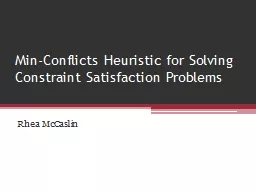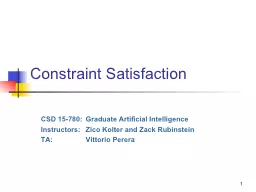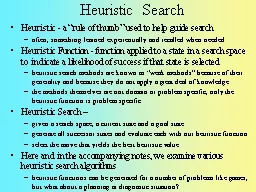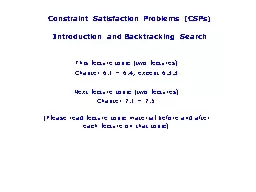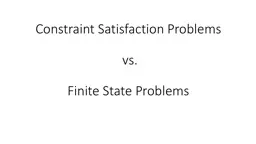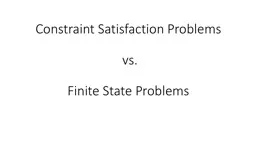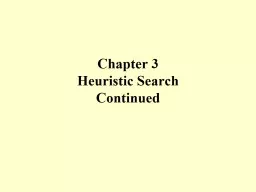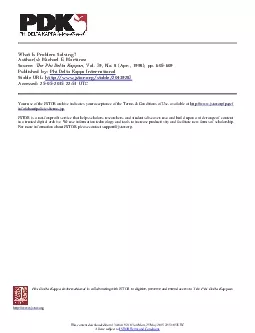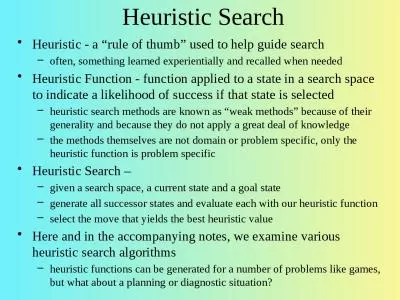PPT-Min-Conflicts Heuristic for Solving Constraint Satisfaction Problems
Author : impristic | Published Date : 2020-06-24
Rhea McCaslin The GDS Network Guarded Discrete Stochastic neural network developed by Johnston and Adorf 2 Hubble Space Telescope Scheduling Problem PROBLEM Between
Presentation Embed Code
Download Presentation
Download Presentation The PPT/PDF document "Min-Conflicts Heuristic for Solving Cons..." is the property of its rightful owner. Permission is granted to download and print the materials on this website for personal, non-commercial use only, and to display it on your personal computer provided you do not modify the materials and that you retain all copyright notices contained in the materials. By downloading content from our website, you accept the terms of this agreement.
Min-Conflicts Heuristic for Solving Constraint Satisfaction Problems: Transcript
Download Rules Of Document
"Min-Conflicts Heuristic for Solving Constraint Satisfaction Problems"The content belongs to its owner. You may download and print it for personal use, without modification, and keep all copyright notices. By downloading, you agree to these terms.
Related Documents

